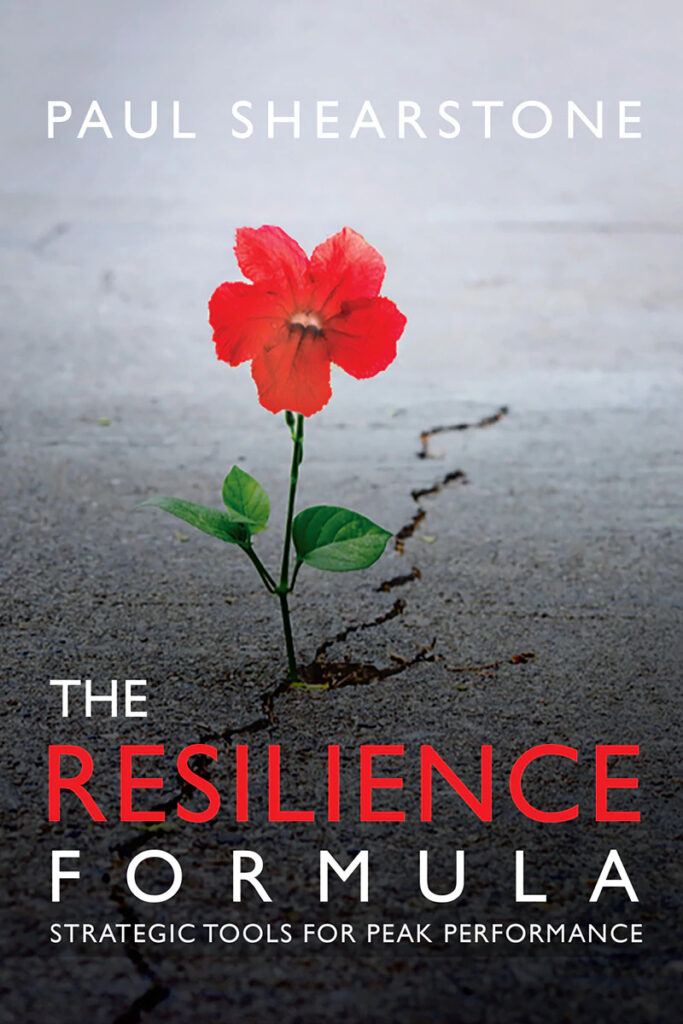
In my first article in the March / April issue, I highlighted (due to two years of COVID or the war in the Ukraine), how people are suffering with stress and the accompanying emotional and physical challenges. They lack the needed ‘Resilience Training.’ The printing industry is no exception. I outlined a stress-management strategy in my latest book, The Resilience Formula – Strategic Tools for Peak Performance. Specifically, my unique 3-step approach, (R3 RECOGNIZE, RESPOND & RESOLVE) finds bedrock in psychology’s Cognitive Behavioural Therapy and has improved the lives of so many.
Step 1: RECOGNIZE
Whenever I ask someone “How are you doing?” I usually get “Oh, I’m pretty stressed these days.” If I ask what’s bugging them, I get a ‘macro’ answer like “It’s COVID, my job, my boss, my family,” (etc). But when I ask for a more ‘micro’ answer to, “What in particular is causing your stress?” too often they can’t tell me. Why? Psychology posits that everyone has an inner storyline (Inner Cognitive Loop) that repeats in our mind. The “Immutable Law of Attitude, Belief & Expectation” states: “To the degree we believe anything, it becomes our reality, even if we are incorrect.”
Thoreau said “Most people live lives of quiet desperation,” meaning that when they look in the mirror, they don’t like what they see: their looks, job, family situation, future, etc. Sadly, that’s their ‘inner cognitive loop’ that plays in their head ‘in the moment’ as they go about their day. This leads to cognitive bias. Simply put, whatever we truly believe – positive or negative – we act upon. For many, the problems they worry about become psychologically voluminous and totally unmanageable. They cease to even think of ways to minimize or control them. Thus, the onset of stress and potential mental illness.
There’s an old expression: “If you don’t know where you’re going, any road will take you there!” I wrote: “If your race has no finish line, there can be no end to your race.” We must ask: “If you can’t clearly identify your issues, how can you control, minimize or eliminate them?” Too often I get “Sure, that makes sense, but it’s easier said than done!” And they’re right. But so is learning to play the piano! One must firmly believe that Resilience Training is an art and a science, as are any other desired skills. Resilience skills can be learned.
I highlight in my book, tools or techniques for clearly identifying or recognizing specific problem issues that need to be done before ways to RESPOND are employed. Here’s one simple example:
On the left side a sheet of paper, make a column from 1 to 10.
- Think about each of your problems and list each one of them.
(NOTE: It’s no surprise that people believe their problems are voluminous, and they believe there’s no end to them, meaning there are too many to count. But, when people put pen to page and list their problems, they list, on average, only three. That’s it! From a psychological perspective, by simply listing and seeing that there are so few real issues, the exercise serves to (a) dispel the erroneous beliefs that the problems are too big or too numerous to control, and (b) seeing on paper how few issues actually exist, eases the mind, changing the mindset from ‘uncontrollable’ to ‘potentially controllable.’) - Beside each problem write 1, 2, 3.
- Start with issue #1. What ‘specifically’ about that problem is at issue and try to identify micro originates causing it. Repeat this for each problem.
(NOTE: The act of clarifying each problem (a) minimizes the task at hand (i.e. only 3 issues), (b) separates the issue so it stands alone (further minimizing the challenge) and (c), reduces the concern even further, identifying with specificity, the real issues to be responded to in the RESPOND #2 stage. Metaphorically, you have just designed a roadmap for you to follow. This exercise can be psychologically cathartic.
In my next article I’ll share psychological techniques to RESPOND – to control, minimize and often eliminate stressful issues that will re-galvanize and embolden the contents within your cognitive loop. Until then, here’s wishing all those in the printing industry good mental health!